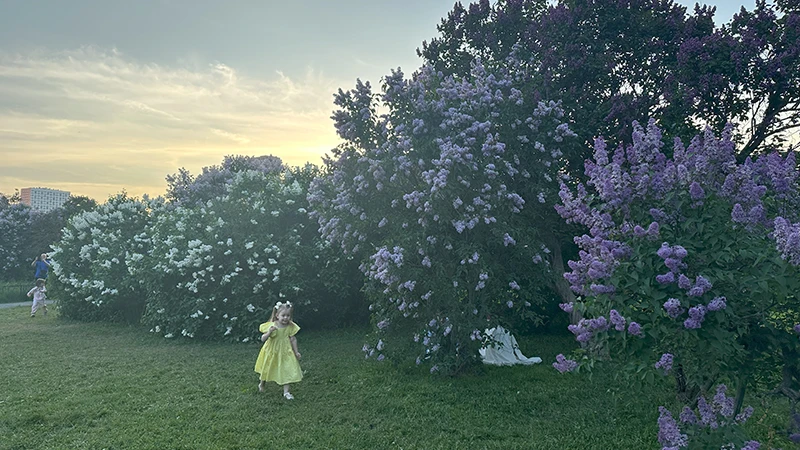 |
Siren garden in Moscow. |
The garden, called Lilac (Siren Garden), is located between Sirenevy Avenue and Shchelkovskoe Highway, more than 15km from the center of Moscow. As soon as you set foot in the garden, you will feel the sweet, gentle fragrance spreading in the air – a typical sign of the siren season in full bloom.
The flower bushes bustled from all sides like a symphony of competing sirens. Muscovites were proud that nowhere else had as many types of sirens as in this garden, with different colors, mainly purple, white and pink.
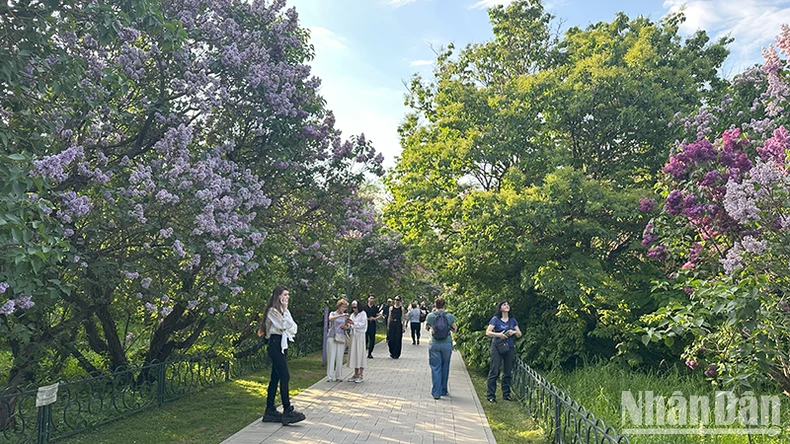 |
These days, Muscovites come to the garden to enjoy the fragrance and beauty of the siren flowers here. |
The garden was founded in 1954 by Leonid Alekseevich Kolesnikov, a flower lover, who developed about 300 different varieties of sirens, of which about 50 still exist today. Many of Kolesnikov’s seedlings preserved in the garden are 60 to 70 years old.
The breeder's varieties were popular not only in the former Soviet Union, but also all over the world. His nursery was so famous that in 1952 he was awarded the Stalin Prize for developing new varieties of siren flowers, although he was not a scientist by training.
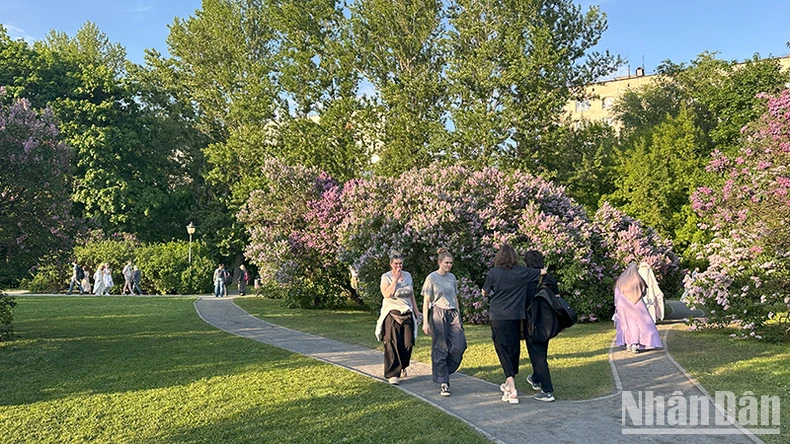 |
The garden has been renovated to a high quality. |
It was also from this nursery that the siren flower became popular everywhere and became the "national flower" of the birch country. The siren flower varieties bred by Kolesnikov were included in the international register. The siren flowers bred by Kolesnikov were planted in Buckingham Palace Park in London as the "Galina Ulanova" variety, in the Taynitsky Garden of the Kremlin and many other famous gardens in the world .
Many species in the park are unique and have been given interesting names by its founder. For example, “Dream”, “Hope”, “Beauty of Moscow”, “Memories of Kirov”, “Soviet Arctic”, “Olympiada Kolesnikova”...
“Moscow Sky” is a tricolor variety. “Alexey Maresyev,” named after the Hero of the Soviet Union, has petals that twist in different directions and resemble airplane propellers. “Hydrangea” is pale pink, “India” is almost crimson, and “Galina Ulanova” is snow-white in beauty.
 |
The sirens are in full bloom. |
The International Siren Association honored and awarded Kolesnikov for his contributions to the selection and breeding of sirens with the prestigious “Golden Siren Branch” Award.
In 1975, Leonid Kolesnikov died and the Lilac Garden was handed over to the city of Moscow. May 18, Leonid Kolesnikov's birthday, has been designated as International Siren Day.
In 2014, the Lilac Garden became part of the Izmailovsky Park of Culture and Recreation. In recent years, the Moscow City Government has invested in the construction and renovation of high-quality park infrastructure.
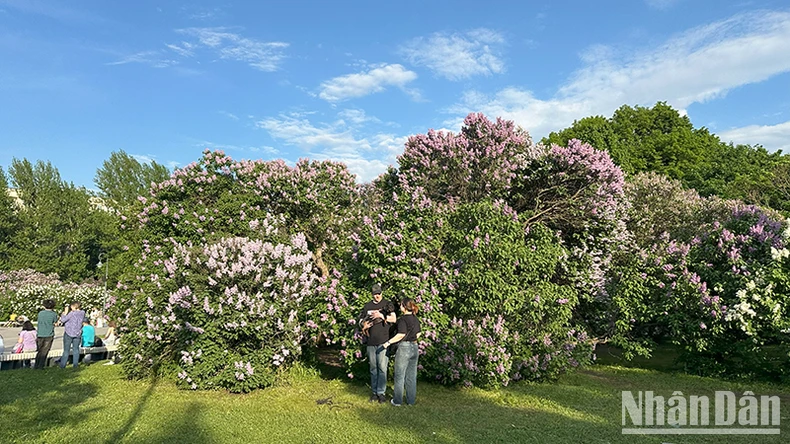 |
Different species of sirens grow together in a population. |
The siren garden area is re-planned with wide, clean walkways, comfortable benches, fountains, lawns, lighting systems, and playgrounds. The garden has information booths where you can read about a particular lilac variety, learn about its history and growing characteristics.
 |
Families bring young children to enjoy siren season. |
And of course, the most important thing in the park is to preserve the large bushes with clusters of flowers of various shades of purple that give off a strong scent. The sirens here are very well cared for and new seedlings appear from time to time. The total area of the nursery is 7 hectares.
The city authorities restored the unique collection of sirens of the founder Kolesnikov, and planted 126 new seedlings, bringing the total number of bushes in the garden to more than 300. The plant collection was supplemented with new species: rhododendrons, conifers, new varieties of sirens.
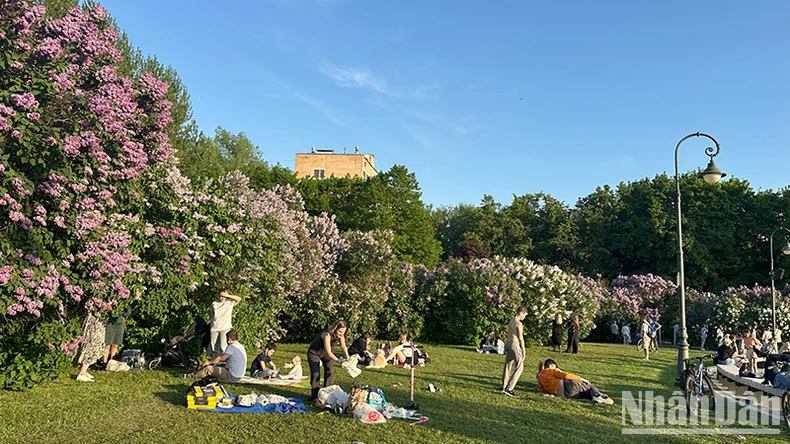 |
Everywhere in the park there are crowds of people coming to enjoy. |
The rare beauty of the siren has inspired poets, writers and composers. Many classic works have emerged from these gardens. In Russia, a sprig of siren is used as a talisman against bad luck.
We were delighted to see teenage boys and girls searching through flower beds for the five-petaled siren. According to Russians, if you find these flowers, your wish will come true.
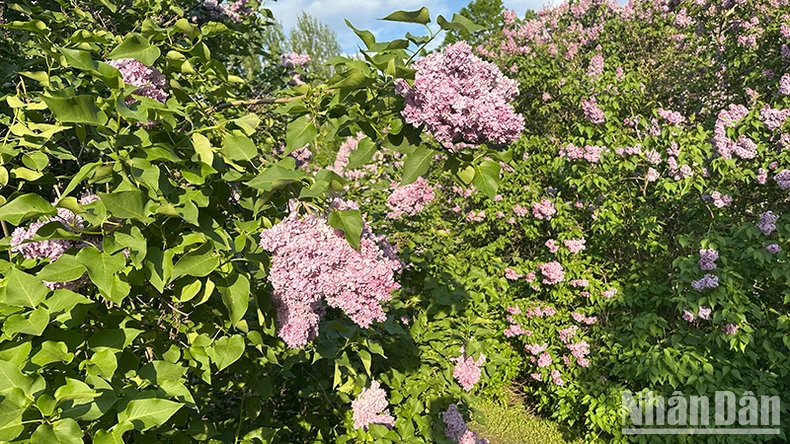 |
Hundreds of sirens compete in color. |
These days many Muscovites flock to the Lilac Garden, because the flowers will fade in a short time and everyone seems to rush to fully enjoy the beauty and fragrance of the siren season every summer.
Every tree and leaf has a group of people taking pictures, or sitting on a blanket to enjoy the beauty of nature. These scenes remind people of Monet's famous paintings - vivid, harmonious and poetic.
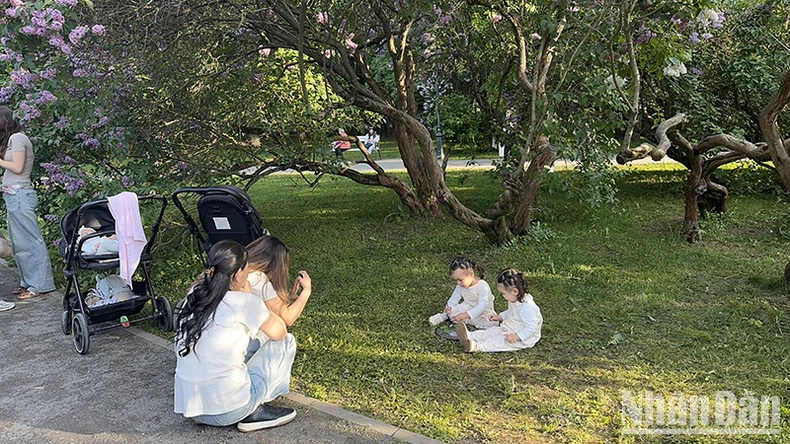 |
Children are dressed up by their parents to take pictures with flowers. |
Children are dressed up by their parents to go to the flower garden, take souvenir photos to preserve their childhood memories with the siren flowers, a part of the family tradition. Besides, the nature-loving and nature-protecting lifestyle of the people of Moscow has helped the flower garden to always be beautiful and preserved for a long time.
 |
The siren trees are 60 to 70 years old. |
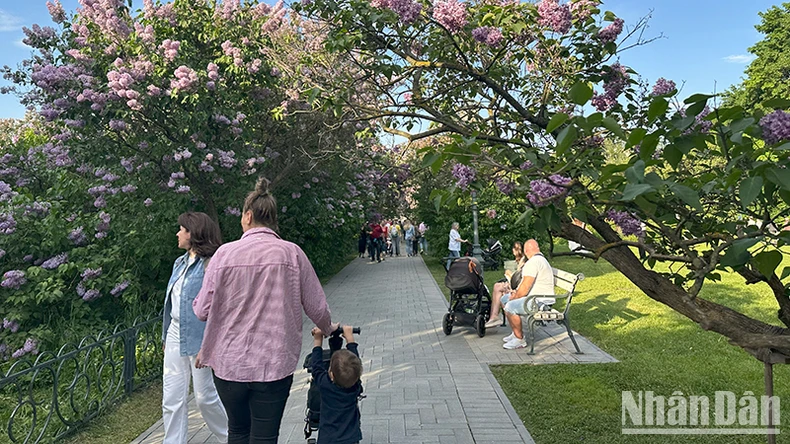 |
The garden has beautifully planned walkways. |
According to THUY VAN (Resident reporter of Nhan Dan Newspaper in Russia)
Source: https://baoangiang.com.vn/mua-hoa-siren-no-ro-bao-hieu-moskva-vao-he-a421518.html


























![[Photo] National Assembly Chairman Tran Thanh Man visits Vietnamese Heroic Mother Ta Thi Tran](https://vphoto.vietnam.vn/thumb/1200x675/vietnam/resource/IMAGE/2025/7/20/765c0bd057dd44ad83ab89fe0255b783)









































































Comment (0)